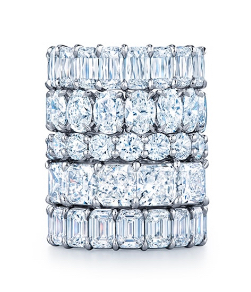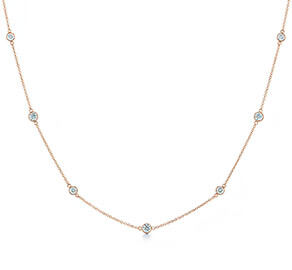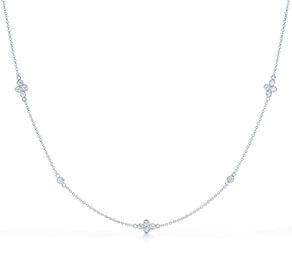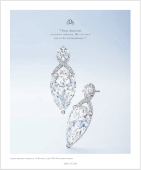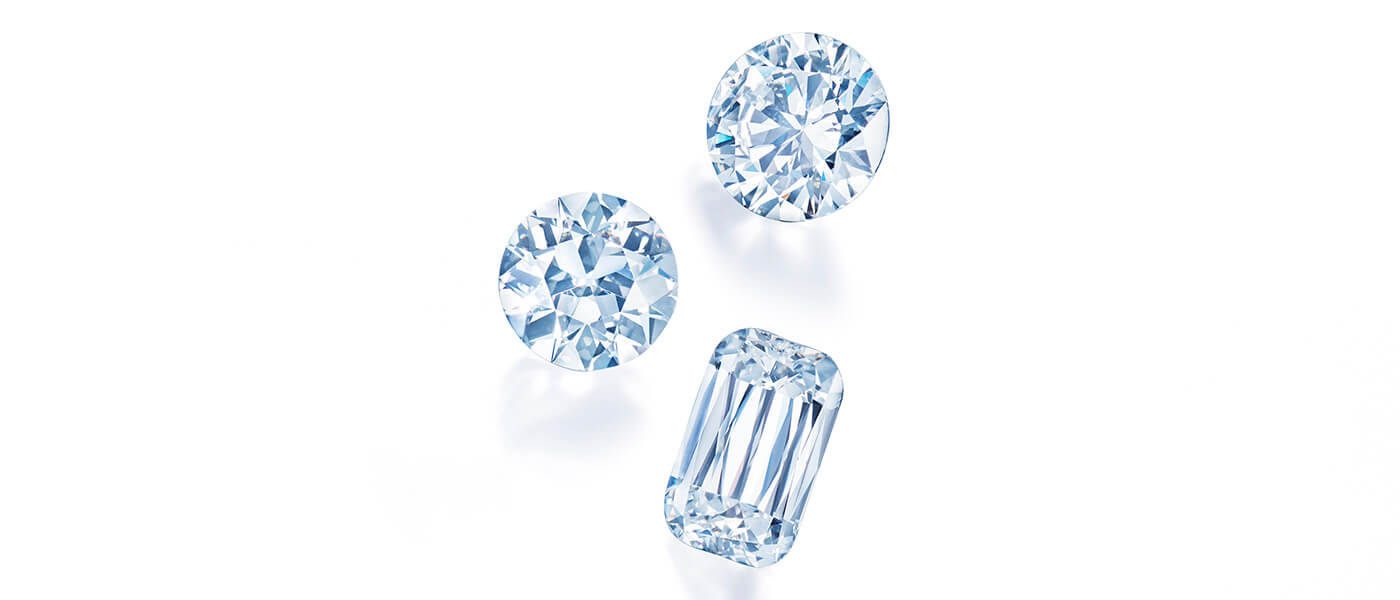DIAMOND CUT
Of the 4Cs, a diamond’s cut is by far the most important. A diamond’s color and clarity is determined by nature but the cut is an art and science developed over time by humans. It takes years of experience to master the skill of properly cutting a rough diamond into a beautiful, polished jewel. A poorly cut stone will appear dull and lifeless. A well-cut stone will be the exact opposite—shining brightly with a sparkle and fire that sets it apart.
The 4Cs – Diamond Cut
The angles, proportions, and faceting patterns work together to create a diamond’s cut. Cut and shape are often confused and not quite the same. Shape such as rounds, ovals, cushions, or marquise refers to the stone’s outline and is a personal preference. Cut, on the other hand, refers to a stone’s faceting pattern, which determines how well a diamond captures and reflects light. It is the ability to reflect light that determines a diamond’s brilliance, which gives a diamond its beauty and sparkle.
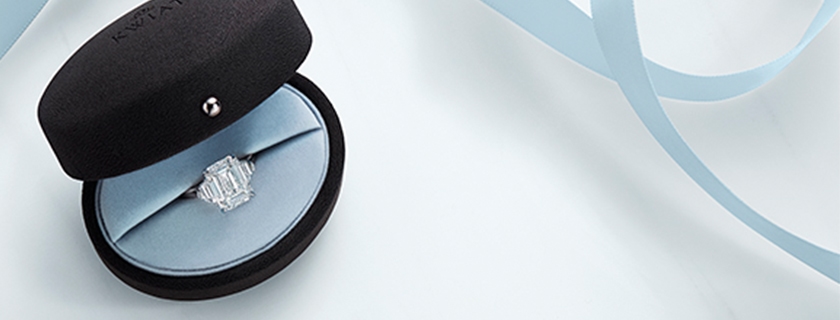
BRIGHTNESS, FIRE AND SCINTILLATION
Brilliance is a balance of three aspects: brightness, fire, and scintillation. Brightness is the return of white light to they eye. Then there is fire, the prismatic effect that happens when light separates into rainbow colors. Finally, there is scintillation, the flash of light and dark seen when you move the diamond. Each plays a part in the sparkle of a diamond.

CUTTING GRADES
Achieving diamond brilliance requires the right combination of proportion and symmetry. Without the correct measurements, a stone won’t sparkle. In 2006, the Gemological Institute of America, the premier diamond grading nonprofit, released grading reports to determine the quality of cut for round stones, the most popular shape. They analyzed all the angles and proportions to figure out which combination produced the most brilliant, beautiful diamonds.
They came up with a grading system that takes all the proportions—table size, angles, facet symmetry, etc.—into account and assigned cut grades. The scale for a diamond’s cut ranges from Excellent to Poor.
KWIAT TIARA® CUT DIAMOND
Our diamonds are cut to look bigger, brighter and more beautiful than the rest.

Any non-round shape is referred to as a fancy shape. Fancy shapes do not receive a GIA cut grade. It is often hard to grade fancy shapes because of the variability in their exact shape. A stone with a cushion, oval, or marquise shape, for example, can have an outline that is more elongated or less elongated, while a round stone is symmetrical. The GIA has yet to come up with a formula for grading fancy cut stones. That doesn’t mean that cut is any less important for these shapes. In fact, it’s much more important to have a trust-worthy guide when shopping for a fancy shape diamond.
ANATOMY OF A DIAMOND
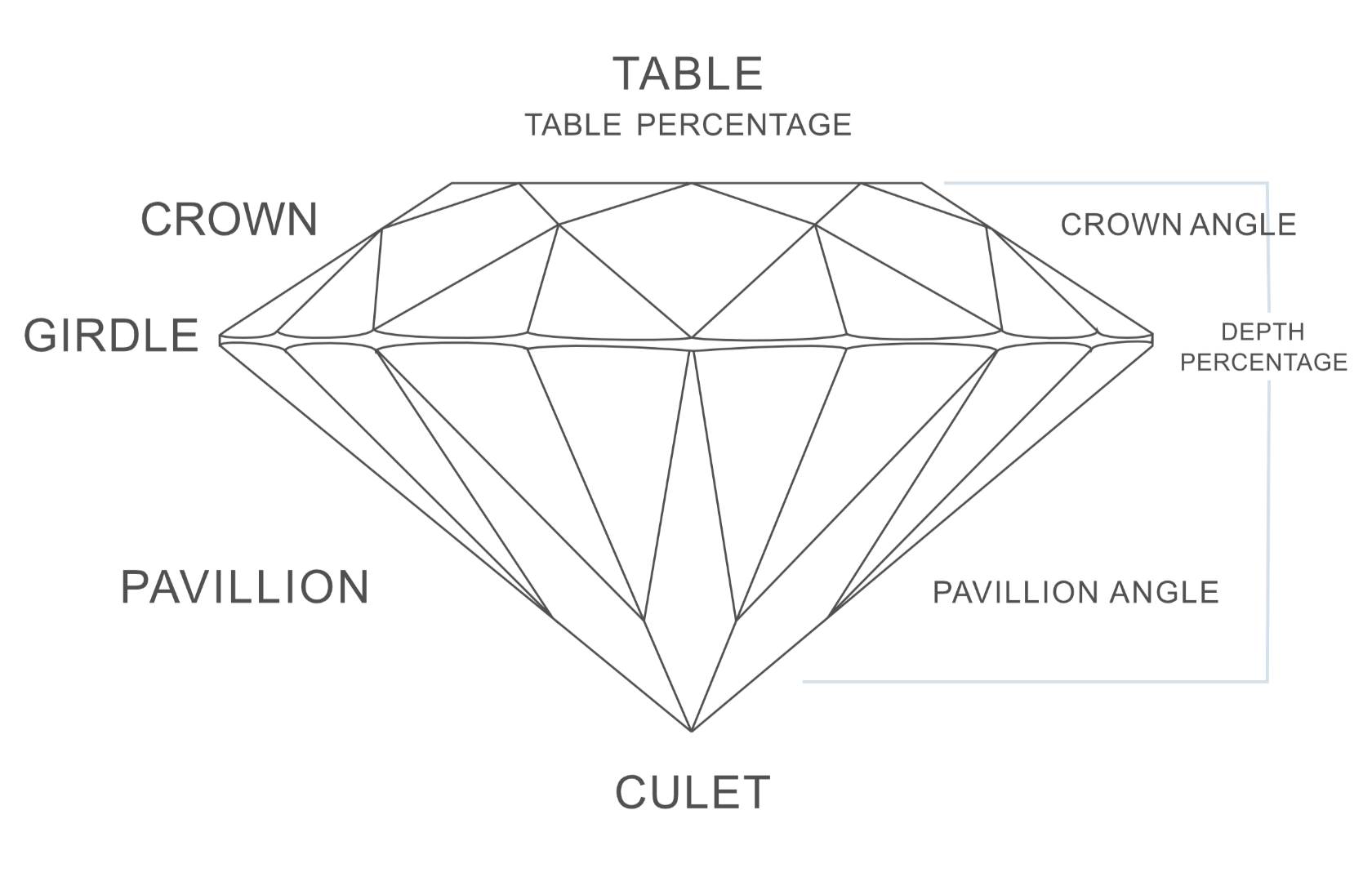
KWIAT STANDARDs
At Kwiat, we understand that cut is the most important aspect of a diamond’s overall appearance and beauty. It is why we have the strictest standards in the world. All round diamonds must receive a grade of Excellent but not all Excellent diamonds meet our high standards. We looked at the GIA grades, and based on more than a century of experience, we defined an even smaller subset of Excellent diamonds. Diamonds that fall under this subset capture the brilliance and beauty of how a diamond should appear. We call this the Kwiat Tiara® Cut.
Our fancy shape stones follow the same strict criteria. Assessing a stone’s cut often requires a discerning eye. We work with only the finest stones. Diamonds must have a cut that falls within the parameters of measurements that were developed through a century of diamond cutting experience.
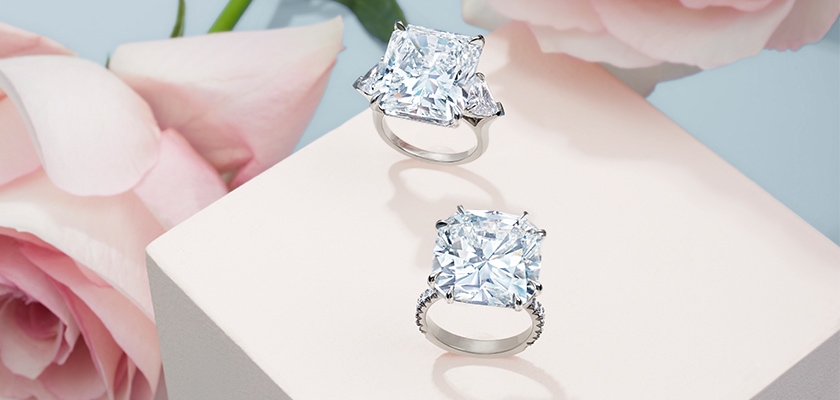
A DIAMOND’S SPARKLE
Certain shapes will sparkle more than others because of faceting patterns. Faceting refers to the placement of flat surfaces around the diamond after it is cut. A diamond can be cut so the faceting patterns create an eye-catching sparkle, or what is known as brilliance. Rounds, marquises, ovals, pear-shapes, radiant cuts and princess shapes all have a brilliant cut faceting pattern. A more subdued and geometric looking pattern is the step cut. Asscher and emerald cuts fall under this category. Then there is a rose cut, with its flat bottom and dome top. This type of faceting is based on what was used in antique jewelry, and cut in a way to shimmer by candlelight.
Never sacrifice on the cut of a diamond. Fancy shapes do not have an agreed upon ideal for cut grades but there are recommended proportions that can help. Choosing anything less than a GIA cut grade of Excellent for a round shape will take away from a diamond’s beauty.










